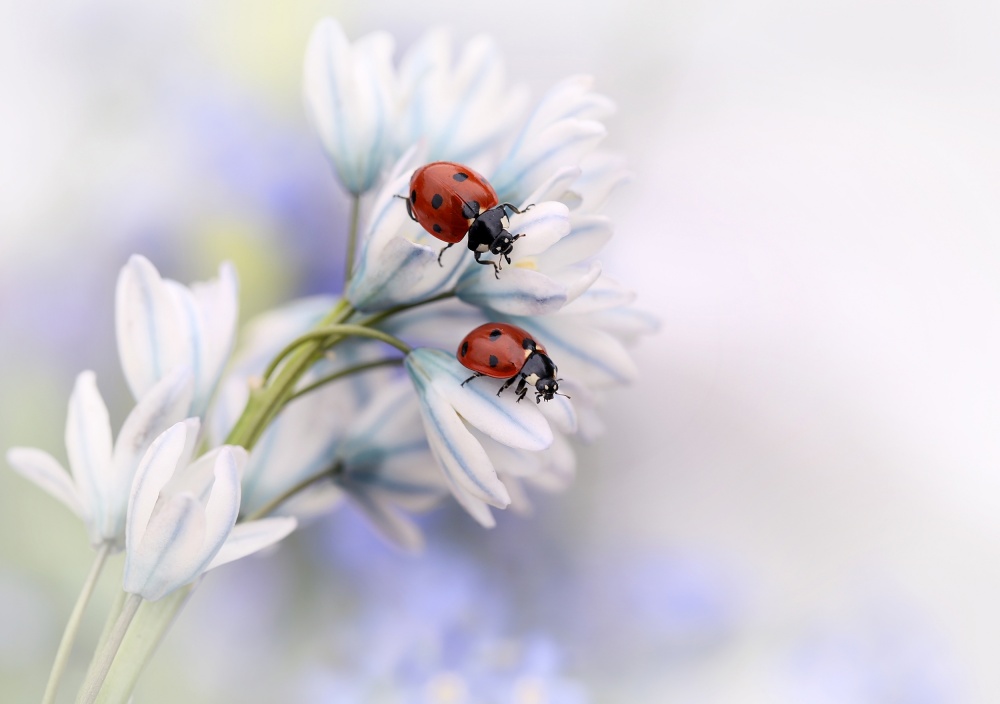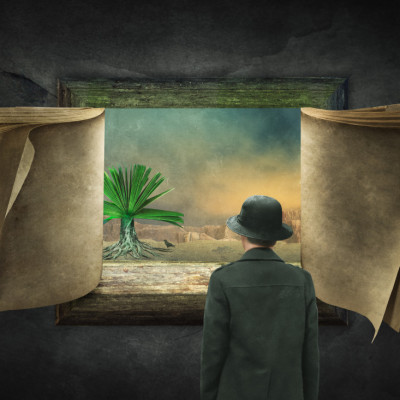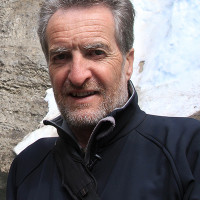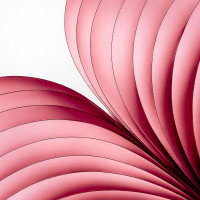by Ellen van Deelen
Published the 6th of May 2021
To make sure I have the flowers that I want to use in my backgrounds, I plant them in a park in my village. Growing your own set takes time, but it gives you great control of your work.
I love to take macro photos, and especially ladybirds on flowers. When I first started to take these photos, I photographed the ladybirds in their natural surroundings. But soon I realized that I really didn't like most of the backgrounds. So I started buying flowers that I liked, and then I planted them so I could use them later in my backgrounds. I do not have a garden at home, so I planted the flowers in a nearby park. It is a safe and quiet place, and there are lots of plants and insects there.
"So I sat with my back to the sun to project my shadow over my small subjects and set. Instant and convenient diffusion!"

Canon 5D Mark III . Canon 100mmf/2.8LMacro . f/5.6
For this shot, I put my tripod at its lowest setting, and as I positioned myself behind the camera I noticed that the afternoon sun was too strong. So I sat with my back to the sun to project my shadow over my small subjects and set. Instant and convenient diffusion! I put my camera bag on the ground and then propped up a white piece of paper against the bag. In front of the paper I arranged some forget-me-nots, the blurry, out-of-focus blue flowers in the background. I pointed the camera a bit downward so that both the light and the background worked well for this composition. In my left hand I held the flower on which the ladybirds sat. This way, I could move the flower around until it was in a good position in the photograph.
"One more thing: I almost forgot to mention how I found the ladybirds!"
I was happy with the result. It was most important to me that the ladybirds appeared sharp and that the composition was strong and effective. Just as important is a colorful and complementary background, and I was happy with the way this one turned out. The ladybirds moved all the time, so I had to be quick to capture them at just the right moment. I have learned to take photos very fast. If you wait too long, you’ll probably be too late. One more thing: I almost forgot to mention how I found the ladybirds! There are some boxwoods (buxus) in a graveyard near the park. Last time it took me half an hour to find a few of my models! After the shoot, I put them back where I found them, but of course, sometimes they just fly away.
This image did not need much editing. When I process my photos, I use Adobe Photoshop CS6, and I often use Nik Color Efex Pro plugin to enhance the colors.
1) I always make sure the Levels are good.
2) I reduce Noise and I Sharpen my photos a bit.
3) In this photo there was some sand on the ladybirds and flowers. I removed it by using the Clone Stamp tool.
4) I used Nik Color Efex Pro plugin to adjust the colors to the beautiful color scheme that you see in the final image.
1) I usually take about 400 photos in one afternoon. The number of photos I take depends on the light, the ISO and the aperture — I like to make sure all bases are covered. I frequently need one more stop so I don't underexpose my photo. I under- and overexpose a lot, especially with macro photography.
2) I always check the histogram on the camera's LCD while I'm shooting to make sure my exposures are correct. It's a great tool and I watch it closely to ensure that there are no spikes in the shadows or highlights.
3) The light is very important. I try to never take close-ups in full sunlight. Also, I prefer to shoot when it isn't too windy or dark and dreary outside — a bit of sun and a bit of clouds is ideal.
4) I use autofocus because the insects move most of the time. I like a blurry background, so I always choose a wide aperture which produces a shallow depth of field. In addition to ladybirds, I like to photograph bees and many other insects.
I am from the Netherlands. My favorite hobbies are painting, drawing, photography and music.

















